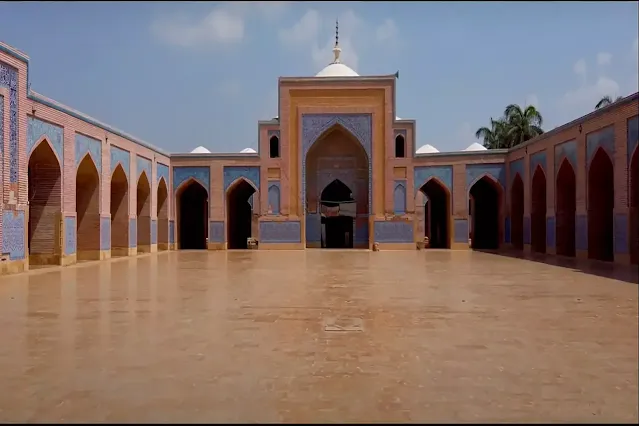Shah Jahan Mosque: A Stunning Mughal Architectural Wonder in Thatta, Pakistan

The Shah Jahan Mosque is a magnificent architectural wonder of Pakistan, located in the small town of Thatta, Sindh. The mosque was built in the 17th century, during the Mughal era, under the patronage of Emperor Shah Jahan. It is a masterpiece of Mughal architecture and a great symbol of the cultural heritage of Pakistan. The mosque has become a popular tourist attraction in recent years, attracting visitors from all over the world who come to marvel at its beauty and history.
History of the Mosque
History of the Mosque
The Shah Jahan Mosque was built in 1647 AD by the Mughal Emperor Shah Jahan, who was known for his great architectural achievements, including the Taj Mahal in India. The mosque was built in honor of the daughter of Shah Jahan, who was married to the local ruler of Thatta. The construction of the mosque took approximately two years to complete and employed over 5,000 workers.
The mosque was built at a time when Thatta was a thriving city and a major center of trade and commerce in the region. The city was known for its rich culture and architecture, which was a blend of Persian, Indian, and Islamic styles. The mosque was built to serve as a symbol of the power and influence of the Mughal Empire in the region and to showcase the architectural prowess of the Mughals.
Architecture of the Mosque
The mosque was built at a time when Thatta was a thriving city and a major center of trade and commerce in the region. The city was known for its rich culture and architecture, which was a blend of Persian, Indian, and Islamic styles. The mosque was built to serve as a symbol of the power and influence of the Mughal Empire in the region and to showcase the architectural prowess of the Mughals.
Architecture of the Mosque
The Shah Jahan Mosque is a stunning example of Mughal architecture. The mosque has a rectangular shape and is built on a raised platform. It has a large central courtyard, which is surrounded by arcades on three sides. The mosque has three domes, one in the center and two smaller ones on either side. The central dome is the largest and is supported by four octagonal pillars. The mosque has four minarets, one at each corner, which are 100 feet tall.
The mosque is built entirely of red brick and is adorned with beautiful tile work and intricate carvings. The interior of the mosque is equally impressive, with its high ceilings, ornate pillars, and beautiful tile work. The mosque has a capacity of accommodating up to 5,000 worshippers at a time.
Significance of the Mosque
The mosque is built entirely of red brick and is adorned with beautiful tile work and intricate carvings. The interior of the mosque is equally impressive, with its high ceilings, ornate pillars, and beautiful tile work. The mosque has a capacity of accommodating up to 5,000 worshippers at a time.
Significance of the Mosque
The Shah Jahan Mosque is a significant historical and cultural landmark of Pakistan. The mosque has survived several centuries of political upheaval, natural disasters, and neglect, and still stands as a testament to the architectural prowess of the Mughals. The mosque has also played a significant role in the religious and cultural life of the people of Thatta and the surrounding areas. The mosque is a place of worship for the local Muslim community and is also visited by thousands of tourists every year.
The Shah Jahan Mosque has also been recognized as a UNESCO World Heritage site, which has helped to raise awareness of its cultural and historical significance. The mosque is an important part of Pakistan's cultural heritage and serves as a reminder of the rich and diverse history of the region.
Conclusion
The Shah Jahan Mosque has also been recognized as a UNESCO World Heritage site, which has helped to raise awareness of its cultural and historical significance. The mosque is an important part of Pakistan's cultural heritage and serves as a reminder of the rich and diverse history of the region.
Conclusion
The Shah Jahan Mosque is an architectural masterpiece that has stood the test of time. The mosque is a symbol of the power and influence of the Mughal Empire in the region and is a testament to the architectural prowess of the Mughals. The mosque is also an important part of Pakistan's cultural heritage and serves as a reminder of the rich and diverse history of the region. The mosque is a must-visit destination for anyone interested in history, architecture, and culture.




